- Home
- Salman Rushdie
The Jaguar Smile: A Nicaraguan Journey Page 2
The Jaguar Smile: A Nicaraguan Journey Read online
Page 2
your eyes in Nicaragua
touch me, call me, grip me,
and throughout American lands
I knock on doors to speak,
I tap on tongues that are tied,
I raise curtains, I plunge
my hands into blood:
O, sorrows
of my land, O death-rattle
of the great established silence,
O, long-suffering peoples,
O, slender waist of tears.
To understand the living in Nicaragua, I found, it was necessary to begin with the dead. The country was full of ghosts. Sandino vive, a wall shouted at me the moment I arrived, and at once a large pinkish boulder replied, Cristo vive, and, what’s more, viene pronto. A few moments later I passed the empty plinth upon which, until seven years ago, there stood the equestrian statue of the monster; except that it wasn’t really him, but a second-hand statue from Italy that had been given a new face. The original face had been Mussolini’s. The statue toppled with the dictatorship, but the empty plinth was, in a way, a deception. Somoza vive: chill, dark words, not much heard in Nicaragua, but the beast was alive all right. Tacho was assassinated in 1980 by an Argentine Montonero unit who found him in Paraguay, but there was his shadow haunting the Honduran frontier, a phantom in a cowboy hat.
Managua sprawled around its own corpse. Eighty per cent of the city’s buildings had fallen down in the great earthquake of 1972, and most of what used to be the centre was now an emptiness. Under Somoza, it had been left as a pile of rubble, and it wasn’t until after his fall that the mess was cleared up and grass was planted where downtown Managua used to be.
The hollow centre gave the city a provisional, film-set unreality. There was still a serious shortage of houses, and Managuans were obliged to improvise with what was left. The Foreign Ministry occupied an abandoned shopping mall. The National Assembly itself sat in a converted bank. The Intercontinental Hotel, a sawn-off concrete pyramid, had unfortunately failed to collapse. It stood amidst the wraiths of old Managua like an omen: an ugly American, but a survivor, nevertheless. (It became impossible, I discovered, not to see such a city in symbolic terms.)
People, too, were in short supply. Nicaragua’s population was under three million, and the war continued to reduce it. In my first hours in the city streets, I saw a number of sights that were familiar to eyes trained in India and Pakistan: the capital’s few buses, many of them donated quite recently by Alfonsín’s new Argentina, were crammed to bursting-point with people, who hung off them in a very subcontinental way. And the roadside shanties put up by the campesinos (peasants) who had come to Managua with hope and not much else, echoed the bustees of Calcutta and Bombay. Later I realized that these echoes of multitudinous lands were as misleading as the tyrant’s empty plinth. Nicaragua, which was about the size of the state of Oklahoma (if you turned England and Wales upside down, you’d have a rough approximation of its proportions), was also the emptiest of the countries of Central America. There were six times as many people in the New York metropolitan area as there were in the whole of Nicaragua. The void of downtown Managua revealed more than a crowded bus.
Filling the void, populating the streets, were the ghosts, the martyr dead. The Argentinian novelist Ernesto Sábato described Buenos Aires as a city whose street-names served to entomb the memory of its heroes, and in Nicaragua, too, I often had the feeling that everyone who mattered had already died and been immortalized in the names of hospitals, schools, theatres, highways or even (in the case of the great poet Rubén Darío) an entire town. In classical Greece, heroes could aspire to the status of gods, or at least hope to be turned into constellations, but the dead of an impoverished twentieth-century country had to make do with this more prosaic, public-park or sports-stadium immortality.
Of the ten earliest leaders of the Frente Sandinista de Liberación Nacional, nine had been killed before Somoza fell. Their faces, painted in the Sandinista colours of red and black, stared gigantically down on the Plaza de la Revolución. Carlos Fonseca (who had founded the Frente in 1956 and who fell in November, 1976, just two and a half years before the Sandinista victory); Silvio Mayorga; Germán Pomares: their names were like a litany. The survivor, Tomás Borge, now Minister of the Interior, was up there too, one living man among the immortals. Borge was badly tortured and, the story goes, ‘took his revenge’ on his torturer after the revolution, by forgiving him.
In a country whose history had been a continuous rite of blood for the forty-six years in which the Somozas had headed one of the longest-running and cruellest dictatorships on earth, it wasn’t surprising that a martyr-culture should have developed. Over and over, I heard the legends of the dead. Of the poet Leonel Rugama, who was trapped in a house by Somoza’s National Guard and ordered to surrender, and who yelled back, ‘Que se rinda tu madre!’ (Let your mother surrender!), and fought on until he died. Of Julio Buitrago, surrounded in a ‘safe house’ in Managua along with Gloria Campos and Doris Tijerino. Finally he was the only one left alive, resisting the might of Somoza’s tanks and heavy artillery hour after hour, while the whole country watched him on live television, because Somoza thought he’d captured a whole FSLN cell and wanted their destruction to be a lesson to the people; a terrible miscalculation, because when the people saw Buitrago come out shooting and die at last, when they saw that just one man had held off the tyrant for so long, they learned the wrong lesson: that resistance was possible.
In Nicaragua ‘at seven years’ the walls still spoke to the dead: Carlos, we’re getting there, the graffiti said; or, Julio, we have not forgotten.
A painting by the primitivist painter Gloria Guevara, titled Cristo guerrillero, showed a crucifixion set in a rocky, mountainous Nicaraguan landscape. Three peasant women, two kneeling, one standing, wept at the foot of the cross, upon which there hung a Christ-figure who wore, instead of a loincloth and a crown of thorns, a pair of jeans and a denim shirt. The picture explained a good deal. The religion of those who lived under the volcanoes of Central America had always had much to do with martyrdom, with the dead; and in Nicaragua many, many people found their way to the revolution through religion. The versicle-and-response format of the Mass now formed the basis of much political activity, too. Sandino’s old slogan, patria libre o morir (a free homeland or death), was now the national rallying-cry, and at the end of public meetings a platform speaker would invariably call out, ‘Patria libre!’ to which the crowd would roar back, rather spookily if you hadn’t shared their history, and if, for you, another, faraway martyr-culture, that of Khomeini’s Iran, represented a fearsome warning, ‘O MORIR!’
The Nicaraguan revolution had been, and remained, a passion. The word had secular as well as Christian resonances. It was that fusion that lay at the heart of Sandinismo. That was what Gloria Guevara’s painting revealed.
And then,
we’ll go wake our dead
with the life they bequeathed us
and we’ll all sing together
while concerts of birds
repeat our message
through the length and breadth
of America.
(From Until We’re Free,
by Gioconda Belli.)
The generations of the dead were the context of seven-year-old ‘Nicaragua libre’, and without context there could be no meaning. When you stood in front of la Loma, the terrifying ‘bunker’ which had been the seat of the Somozas’ power, you began to remember: that the first Somoza, Anastasio Somoza García, had presided over the killing of some 20,000 Nicaraguans until he himself was shot, at a ball in León, by the poet Rigoberto López (who was himself killed by the National Guard an instant later); and that, after a brief period of (slight) liberalization under one of Tacho I’s sons, Luis, the other son resumed normal Somoza operations in 1967. This was Tacho II, last and greediest of the line. It was just seven years since the horror ended, seven years since men were fed to panthers in the despot’s private zoo, since torture, castration, rape. Se
ven years since the beast. La Loma made the United States’ claim that Nicaragua was once again a totalitarian state sound obscene. The bunker was the reality of totalitarianism, its hideous remnant and reminder. The beheaded, violated, mutilated ghosts of Nicaragua bore witness, every day, to what used to happen here, and must never happen again.
The most famous ghost, Augusto César Sandino, had by now been thoroughly mythologized, almost as thoroughly as, for example, Gandhi. A little, frowning man in a big hat, he had become a collection of stories. In 1927, he had been head of the sales department of the Huasteca petrol company in Mexico, when the Nicaraguan Liberal, Sacasa, backed by the army’s chief of staff, Moncada, rose in arms against the US-backed conservative, Adolfo Díaz. Sandino returned to Nicaragua to fight on the Liberal side, and when Moncada did a deal with the US and laid down his arms, Sandino refused, so that Moncada had to tell the Americans: ‘All my men surrender except one,’ and Sandino and his ‘Crazy Little Army’ took to the mountains … Yes, that story, and the story of his betrayal, his assassination by Somoza’s thugs in February 1934, after he had signed a peace treaty and when he was on his way home from the celebratory banquet. I was struck by the fact that it was Sandino’s hat, and not his face, that had become the most potent icon in Nicaragua. A hatless Sandino would not be instantly recognizable; but that hat no longer needed his presence beneath it to be evocative. In many instances, FSLN graffiti were followed by a schematic drawing of the celebrated headgear, a drawing that looked exactly like an infinity-sign with a conical volcano rising out of it. Infinity and eruptions: the illegitimate boy from Niquinohomo was now a cluster of metaphors. Or, to put it another way: Sandino had become his hat.
In the west of the city was a low hill on which the initials FSLN reclined, each whitish figure about a hundred feet long, like a recumbent Hollywood sign. At first I thought the letters had been cut out of the hillside in the fashion of an English white horse, or maybe they were made of concrete, or even marble? But the sign was only wooden, made up of boards lying on the hillside, propped up, where necessary, by simple gantries. When I got closer to it, I saw that it had already started to look somewhat the worse for wear. Before the revolution there was a different sign on this hill. ROLTER, it read, advertising a local manufacturer of boots and shoes. That discovery intensified my sense of the provisional quality of life in post-revolutionary Managua. One wooden advertisement could easily be replaced by another. Nor could I resist the implications of putting the Frente Sandinista’s sign on what used to be Boot Hill.
It was the rainy season in Managua; the skies were overcast. A cold wind blew from the north.
2
THE ROAD TO CAMOAPA
The walls of the home of Nicaragua’s Vice-President, the novelist Sergio Ramírez, were hung with masks. ‘Ah,’ said the security guard, admitting me to a courtyard of old trees surrounded by spacious verandahs, ‘el escritor hindú.’ Spanish uses hindú to mean ‘Indian’; the construction de la India, which seemed OK to me, sounded stilted to Nicaraguan ears. So during my stay I became the hindú writer, or even, quite often, poeta. Which was quite a flattering disguise.
In Nicaragua, the mask was an indispensable feature of many popular festivals and folk-dances. There were animal-masks, devil-masks, even, as I was to discover, masks of men with bleeding bullet-holes in the centres of their foreheads. During the insurrection, Sandinista guerrillas often went into action wearing masks of pink mesh with simple faces painted on them. These masks, too, originated in folk-dance. One night I went to see a ballet based on the country’s popular dances, and saw that one of the ballerinas was wearing a pink mask. The mask’s associations with the revolution had grown so strong that it transformed her, in my eyes at least, into something wondrously strange: not a masked dancer, but a guerrilla in a tutu.
The true purpose of masks, as any actor will tell you, is not concealment, but transformation. A culture of masks is one that understands a good deal about the processes of metamorphosis.
I set off in the company of Sergio Ramírez and one of the nine-man National Directorate of the FSLN, Luis Carrión, to the town of Camoapa in Boaco province, to witness a part of one of the most important transformations taking place in the new Nicaragua. It was National Agrarian Reform Day, and in Camoapa land titles for no less than 70,000 acres were to be handed out to the campesinos.
Sergio Ramírez was unusually big (well over six feet) and heavily built for a Nicaraguan, and could look, at times, positively Chinese in a Mikadoish sort of way; Luis Carrión was of a much more characteristically Nicaraguan light, slight build, with a moustache that was – as they used to say in the Paris of the 1968 événements – ‘Marxiste, tendance Groucho’. They were both remarkably free of the pomposity and circumlocution that were so often the stock-in-trade of politicians. ‘How many acres have been redistributed since the revolution?’ I asked, and once they had agreed how many manzanas (the Nicaraguan land unit) there were in a hectare, and we had all haggled about the number of acres a hectare contained, we arrived at a rough figure of over two million acres, handed out to about 100,000 families.
I was impressed, and said so. Ramírez nodded. ‘It shows the people that we have the will to keep our promises.’
When Don Anastasio Somoza fled the country, he took with him everything he could carry, including all the cash in the national treasury. He even had the bodies of Tacho I and Luis Somoza dug up and they, too, went into exile. No doubt he would have taken the land as well, if he’d known how. But he couldn’t, and nor could his cronies who fled with him, and so the government of the new Nicaragua found itself in possession of the abandoned estates, amounting to half the arable land in the country. The land being redistributed was taken from those immense holdings and not, as Carrión and Ramírez clearly felt obliged to explain, from anywhere else. ‘Nobody who stayed in Nicaragua to work his land had it confiscated,’ said Ramírez, who spoke excellent English but tired of it after a while and lapsed into Spanish. ‘Since our absolute priorities are production and defence, why should we meddle with someone who is producing? On the contrary, we assist many large, private landowners.’ On the road to Camoapa, which passed between the country’s two big lakes, Lake Managua and Lake Nicaragua (really an inland sea, and the only place in the world where you could be eaten by freshwater sharks), they were at pains to point out farms and industries that remained in private hands. There was often a little, defensive something that would creep into the discourse of Nicaraguan leaders. ‘No country is put under a microscope the way we are,’ Foreign Minister d’Escoto would tell me. That sense of being watched, all the time, for the tiniest slip, made them jumpy.
The road to Camoapa was made of brick, like many roads in Nicaragua. Somoza used to own a brick factory. After the ’72 earthquake he insisted that the nation’s thoroughfares be reconstructed in Presidential bricks, which he then sold to the nation at high prices. ‘But we discovered that the bricks were also very easy to lever up,’ Luis Carrión told me contentedly, ‘so that during the insurrection years we were often able to stop his convoys quite easily, thanks to his own brick roads.’ Carrión looked too young to be running a country. Nicaragua made ‘young novelists’ of thirty-nine years feel antique. At least Sergio Ramírez was a few years older than me. Then again, he made me feel short.
I asked Ramírez about the recent pronouncements on Nicaragua by the famous Peruvian novelist Mario Vargas Llosa, in the New York Times and elsewhere. ‘His positions have moved so far to the right these days that I wasn’t surprised by his criticisms,’ Ramírez said. What, then, did he think of Vargas Llosa’s suggestion that the people who merited the West’s support in Nicaragua were neither the Contra nor the FSLN, but the anti-Sandinista democratic Nicaraguans, who might even now be a majority? Carrión and Ramírez both laughed. ‘There’s no such majority,’ Ramírez said. ‘Let me know if you locate it.’
Vargas Llosa also hinted that the Sandinistas were a Soviet-style state in disguise
; that the various nods in the direction of a mixed economy and a pluralistic democracy were no more than window dressing; and that, in fact, the FSLN was being obliged to preserve such things precisely on account of the pressure from outside. (Though, of course, he hastened to add that he did not support the Contra.)
Ramírez seemed genuinely annoyed by this suggestion. If it weren’t for the war, he said, much more power could be given to the people than a state of emergency permitted; that is, peace would mean more democracy, not less. ‘We have the right to self-determination. Our internal structures are nobody’s business but our own.’
‘But,’ I suggested, ‘now that the $100 million for the Contra has been approved, other people have made it their business, haven’t they?’
Luis Carrión replied. ‘The hundred million is not the point. The counter-revolution is not the real threat.’ His view was that the Contra army had effectively been defeated. ‘These days they try hard to avoid meeting us in direct combat, because of their heavy losses. They concentrate instead on terrorist acts, aimed at the civilian population, and at damaging production. We expect more of these now. We expect they will try something in the cities, even in Managua, now that they have the extra money; but we are prepared. They also have a major problem of recruitment and morale. Their numbers have fallen by several thousand in the past two years. No: the real threat is the CIA.’
Ah yes, la Cia. My reflex reaction to the Agency’s entry into the conversation was simultaneously Eastern and Western. The Western voice inside me, the voice that was fed up with cloaks and daggers and conspiracy theories, muttered, ‘not them again’. The Eastern voice, however, understood that the CIA really did exist, was powerful, and although it was easy to make it a scapegoat, it was also just a bit too jaded, too cynical, to discount its power.
The CIA operated in Central America through what it charmingly referred to as UCLAs: Unilaterally Controlled Latino Assets. Now that it was to be permitted to resume overt operations, those Assets would be going to work with a will. Conservative estimates of the CIA’s planned 1986–87 budget against Nicaragua suggested a figure somewhere in the near vicinity of $400 million – four times the aid allocated to the Contra forces. Add to that the $300 million being spent by the Reagan administration to try and ‘buy off’ Nicaragua’s neighbours, and you had a grand total of $800 million being spent on dirty tricks and destabilization, to bring to heel a country of under three million people.
touch me, call me, grip me,
and throughout American lands
I knock on doors to speak,
I tap on tongues that are tied,
I raise curtains, I plunge
my hands into blood:
O, sorrows
of my land, O death-rattle
of the great established silence,
O, long-suffering peoples,
O, slender waist of tears.
To understand the living in Nicaragua, I found, it was necessary to begin with the dead. The country was full of ghosts. Sandino vive, a wall shouted at me the moment I arrived, and at once a large pinkish boulder replied, Cristo vive, and, what’s more, viene pronto. A few moments later I passed the empty plinth upon which, until seven years ago, there stood the equestrian statue of the monster; except that it wasn’t really him, but a second-hand statue from Italy that had been given a new face. The original face had been Mussolini’s. The statue toppled with the dictatorship, but the empty plinth was, in a way, a deception. Somoza vive: chill, dark words, not much heard in Nicaragua, but the beast was alive all right. Tacho was assassinated in 1980 by an Argentine Montonero unit who found him in Paraguay, but there was his shadow haunting the Honduran frontier, a phantom in a cowboy hat.
Managua sprawled around its own corpse. Eighty per cent of the city’s buildings had fallen down in the great earthquake of 1972, and most of what used to be the centre was now an emptiness. Under Somoza, it had been left as a pile of rubble, and it wasn’t until after his fall that the mess was cleared up and grass was planted where downtown Managua used to be.
The hollow centre gave the city a provisional, film-set unreality. There was still a serious shortage of houses, and Managuans were obliged to improvise with what was left. The Foreign Ministry occupied an abandoned shopping mall. The National Assembly itself sat in a converted bank. The Intercontinental Hotel, a sawn-off concrete pyramid, had unfortunately failed to collapse. It stood amidst the wraiths of old Managua like an omen: an ugly American, but a survivor, nevertheless. (It became impossible, I discovered, not to see such a city in symbolic terms.)
People, too, were in short supply. Nicaragua’s population was under three million, and the war continued to reduce it. In my first hours in the city streets, I saw a number of sights that were familiar to eyes trained in India and Pakistan: the capital’s few buses, many of them donated quite recently by Alfonsín’s new Argentina, were crammed to bursting-point with people, who hung off them in a very subcontinental way. And the roadside shanties put up by the campesinos (peasants) who had come to Managua with hope and not much else, echoed the bustees of Calcutta and Bombay. Later I realized that these echoes of multitudinous lands were as misleading as the tyrant’s empty plinth. Nicaragua, which was about the size of the state of Oklahoma (if you turned England and Wales upside down, you’d have a rough approximation of its proportions), was also the emptiest of the countries of Central America. There were six times as many people in the New York metropolitan area as there were in the whole of Nicaragua. The void of downtown Managua revealed more than a crowded bus.
Filling the void, populating the streets, were the ghosts, the martyr dead. The Argentinian novelist Ernesto Sábato described Buenos Aires as a city whose street-names served to entomb the memory of its heroes, and in Nicaragua, too, I often had the feeling that everyone who mattered had already died and been immortalized in the names of hospitals, schools, theatres, highways or even (in the case of the great poet Rubén Darío) an entire town. In classical Greece, heroes could aspire to the status of gods, or at least hope to be turned into constellations, but the dead of an impoverished twentieth-century country had to make do with this more prosaic, public-park or sports-stadium immortality.
Of the ten earliest leaders of the Frente Sandinista de Liberación Nacional, nine had been killed before Somoza fell. Their faces, painted in the Sandinista colours of red and black, stared gigantically down on the Plaza de la Revolución. Carlos Fonseca (who had founded the Frente in 1956 and who fell in November, 1976, just two and a half years before the Sandinista victory); Silvio Mayorga; Germán Pomares: their names were like a litany. The survivor, Tomás Borge, now Minister of the Interior, was up there too, one living man among the immortals. Borge was badly tortured and, the story goes, ‘took his revenge’ on his torturer after the revolution, by forgiving him.
In a country whose history had been a continuous rite of blood for the forty-six years in which the Somozas had headed one of the longest-running and cruellest dictatorships on earth, it wasn’t surprising that a martyr-culture should have developed. Over and over, I heard the legends of the dead. Of the poet Leonel Rugama, who was trapped in a house by Somoza’s National Guard and ordered to surrender, and who yelled back, ‘Que se rinda tu madre!’ (Let your mother surrender!), and fought on until he died. Of Julio Buitrago, surrounded in a ‘safe house’ in Managua along with Gloria Campos and Doris Tijerino. Finally he was the only one left alive, resisting the might of Somoza’s tanks and heavy artillery hour after hour, while the whole country watched him on live television, because Somoza thought he’d captured a whole FSLN cell and wanted their destruction to be a lesson to the people; a terrible miscalculation, because when the people saw Buitrago come out shooting and die at last, when they saw that just one man had held off the tyrant for so long, they learned the wrong lesson: that resistance was possible.
In Nicaragua ‘at seven years’ the walls still spoke to the dead: Carlos, we’re getting there, the graffiti said; or, Julio, we have not forgotten.
A painting by the primitivist painter Gloria Guevara, titled Cristo guerrillero, showed a crucifixion set in a rocky, mountainous Nicaraguan landscape. Three peasant women, two kneeling, one standing, wept at the foot of the cross, upon which there hung a Christ-figure who wore, instead of a loincloth and a crown of thorns, a pair of jeans and a denim shirt. The picture explained a good deal. The religion of those who lived under the volcanoes of Central America had always had much to do with martyrdom, with the dead; and in Nicaragua many, many people found their way to the revolution through religion. The versicle-and-response format of the Mass now formed the basis of much political activity, too. Sandino’s old slogan, patria libre o morir (a free homeland or death), was now the national rallying-cry, and at the end of public meetings a platform speaker would invariably call out, ‘Patria libre!’ to which the crowd would roar back, rather spookily if you hadn’t shared their history, and if, for you, another, faraway martyr-culture, that of Khomeini’s Iran, represented a fearsome warning, ‘O MORIR!’
The Nicaraguan revolution had been, and remained, a passion. The word had secular as well as Christian resonances. It was that fusion that lay at the heart of Sandinismo. That was what Gloria Guevara’s painting revealed.
And then,
we’ll go wake our dead
with the life they bequeathed us
and we’ll all sing together
while concerts of birds
repeat our message
through the length and breadth
of America.
(From Until We’re Free,
by Gioconda Belli.)
The generations of the dead were the context of seven-year-old ‘Nicaragua libre’, and without context there could be no meaning. When you stood in front of la Loma, the terrifying ‘bunker’ which had been the seat of the Somozas’ power, you began to remember: that the first Somoza, Anastasio Somoza García, had presided over the killing of some 20,000 Nicaraguans until he himself was shot, at a ball in León, by the poet Rigoberto López (who was himself killed by the National Guard an instant later); and that, after a brief period of (slight) liberalization under one of Tacho I’s sons, Luis, the other son resumed normal Somoza operations in 1967. This was Tacho II, last and greediest of the line. It was just seven years since the horror ended, seven years since men were fed to panthers in the despot’s private zoo, since torture, castration, rape. Se
ven years since the beast. La Loma made the United States’ claim that Nicaragua was once again a totalitarian state sound obscene. The bunker was the reality of totalitarianism, its hideous remnant and reminder. The beheaded, violated, mutilated ghosts of Nicaragua bore witness, every day, to what used to happen here, and must never happen again.
The most famous ghost, Augusto César Sandino, had by now been thoroughly mythologized, almost as thoroughly as, for example, Gandhi. A little, frowning man in a big hat, he had become a collection of stories. In 1927, he had been head of the sales department of the Huasteca petrol company in Mexico, when the Nicaraguan Liberal, Sacasa, backed by the army’s chief of staff, Moncada, rose in arms against the US-backed conservative, Adolfo Díaz. Sandino returned to Nicaragua to fight on the Liberal side, and when Moncada did a deal with the US and laid down his arms, Sandino refused, so that Moncada had to tell the Americans: ‘All my men surrender except one,’ and Sandino and his ‘Crazy Little Army’ took to the mountains … Yes, that story, and the story of his betrayal, his assassination by Somoza’s thugs in February 1934, after he had signed a peace treaty and when he was on his way home from the celebratory banquet. I was struck by the fact that it was Sandino’s hat, and not his face, that had become the most potent icon in Nicaragua. A hatless Sandino would not be instantly recognizable; but that hat no longer needed his presence beneath it to be evocative. In many instances, FSLN graffiti were followed by a schematic drawing of the celebrated headgear, a drawing that looked exactly like an infinity-sign with a conical volcano rising out of it. Infinity and eruptions: the illegitimate boy from Niquinohomo was now a cluster of metaphors. Or, to put it another way: Sandino had become his hat.
In the west of the city was a low hill on which the initials FSLN reclined, each whitish figure about a hundred feet long, like a recumbent Hollywood sign. At first I thought the letters had been cut out of the hillside in the fashion of an English white horse, or maybe they were made of concrete, or even marble? But the sign was only wooden, made up of boards lying on the hillside, propped up, where necessary, by simple gantries. When I got closer to it, I saw that it had already started to look somewhat the worse for wear. Before the revolution there was a different sign on this hill. ROLTER, it read, advertising a local manufacturer of boots and shoes. That discovery intensified my sense of the provisional quality of life in post-revolutionary Managua. One wooden advertisement could easily be replaced by another. Nor could I resist the implications of putting the Frente Sandinista’s sign on what used to be Boot Hill.
It was the rainy season in Managua; the skies were overcast. A cold wind blew from the north.
2
THE ROAD TO CAMOAPA
The walls of the home of Nicaragua’s Vice-President, the novelist Sergio Ramírez, were hung with masks. ‘Ah,’ said the security guard, admitting me to a courtyard of old trees surrounded by spacious verandahs, ‘el escritor hindú.’ Spanish uses hindú to mean ‘Indian’; the construction de la India, which seemed OK to me, sounded stilted to Nicaraguan ears. So during my stay I became the hindú writer, or even, quite often, poeta. Which was quite a flattering disguise.
In Nicaragua, the mask was an indispensable feature of many popular festivals and folk-dances. There were animal-masks, devil-masks, even, as I was to discover, masks of men with bleeding bullet-holes in the centres of their foreheads. During the insurrection, Sandinista guerrillas often went into action wearing masks of pink mesh with simple faces painted on them. These masks, too, originated in folk-dance. One night I went to see a ballet based on the country’s popular dances, and saw that one of the ballerinas was wearing a pink mask. The mask’s associations with the revolution had grown so strong that it transformed her, in my eyes at least, into something wondrously strange: not a masked dancer, but a guerrilla in a tutu.
The true purpose of masks, as any actor will tell you, is not concealment, but transformation. A culture of masks is one that understands a good deal about the processes of metamorphosis.
I set off in the company of Sergio Ramírez and one of the nine-man National Directorate of the FSLN, Luis Carrión, to the town of Camoapa in Boaco province, to witness a part of one of the most important transformations taking place in the new Nicaragua. It was National Agrarian Reform Day, and in Camoapa land titles for no less than 70,000 acres were to be handed out to the campesinos.
Sergio Ramírez was unusually big (well over six feet) and heavily built for a Nicaraguan, and could look, at times, positively Chinese in a Mikadoish sort of way; Luis Carrión was of a much more characteristically Nicaraguan light, slight build, with a moustache that was – as they used to say in the Paris of the 1968 événements – ‘Marxiste, tendance Groucho’. They were both remarkably free of the pomposity and circumlocution that were so often the stock-in-trade of politicians. ‘How many acres have been redistributed since the revolution?’ I asked, and once they had agreed how many manzanas (the Nicaraguan land unit) there were in a hectare, and we had all haggled about the number of acres a hectare contained, we arrived at a rough figure of over two million acres, handed out to about 100,000 families.
I was impressed, and said so. Ramírez nodded. ‘It shows the people that we have the will to keep our promises.’
When Don Anastasio Somoza fled the country, he took with him everything he could carry, including all the cash in the national treasury. He even had the bodies of Tacho I and Luis Somoza dug up and they, too, went into exile. No doubt he would have taken the land as well, if he’d known how. But he couldn’t, and nor could his cronies who fled with him, and so the government of the new Nicaragua found itself in possession of the abandoned estates, amounting to half the arable land in the country. The land being redistributed was taken from those immense holdings and not, as Carrión and Ramírez clearly felt obliged to explain, from anywhere else. ‘Nobody who stayed in Nicaragua to work his land had it confiscated,’ said Ramírez, who spoke excellent English but tired of it after a while and lapsed into Spanish. ‘Since our absolute priorities are production and defence, why should we meddle with someone who is producing? On the contrary, we assist many large, private landowners.’ On the road to Camoapa, which passed between the country’s two big lakes, Lake Managua and Lake Nicaragua (really an inland sea, and the only place in the world where you could be eaten by freshwater sharks), they were at pains to point out farms and industries that remained in private hands. There was often a little, defensive something that would creep into the discourse of Nicaraguan leaders. ‘No country is put under a microscope the way we are,’ Foreign Minister d’Escoto would tell me. That sense of being watched, all the time, for the tiniest slip, made them jumpy.
The road to Camoapa was made of brick, like many roads in Nicaragua. Somoza used to own a brick factory. After the ’72 earthquake he insisted that the nation’s thoroughfares be reconstructed in Presidential bricks, which he then sold to the nation at high prices. ‘But we discovered that the bricks were also very easy to lever up,’ Luis Carrión told me contentedly, ‘so that during the insurrection years we were often able to stop his convoys quite easily, thanks to his own brick roads.’ Carrión looked too young to be running a country. Nicaragua made ‘young novelists’ of thirty-nine years feel antique. At least Sergio Ramírez was a few years older than me. Then again, he made me feel short.
I asked Ramírez about the recent pronouncements on Nicaragua by the famous Peruvian novelist Mario Vargas Llosa, in the New York Times and elsewhere. ‘His positions have moved so far to the right these days that I wasn’t surprised by his criticisms,’ Ramírez said. What, then, did he think of Vargas Llosa’s suggestion that the people who merited the West’s support in Nicaragua were neither the Contra nor the FSLN, but the anti-Sandinista democratic Nicaraguans, who might even now be a majority? Carrión and Ramírez both laughed. ‘There’s no such majority,’ Ramírez said. ‘Let me know if you locate it.’
Vargas Llosa also hinted that the Sandinistas were a Soviet-style state in disguise
; that the various nods in the direction of a mixed economy and a pluralistic democracy were no more than window dressing; and that, in fact, the FSLN was being obliged to preserve such things precisely on account of the pressure from outside. (Though, of course, he hastened to add that he did not support the Contra.)
Ramírez seemed genuinely annoyed by this suggestion. If it weren’t for the war, he said, much more power could be given to the people than a state of emergency permitted; that is, peace would mean more democracy, not less. ‘We have the right to self-determination. Our internal structures are nobody’s business but our own.’
‘But,’ I suggested, ‘now that the $100 million for the Contra has been approved, other people have made it their business, haven’t they?’
Luis Carrión replied. ‘The hundred million is not the point. The counter-revolution is not the real threat.’ His view was that the Contra army had effectively been defeated. ‘These days they try hard to avoid meeting us in direct combat, because of their heavy losses. They concentrate instead on terrorist acts, aimed at the civilian population, and at damaging production. We expect more of these now. We expect they will try something in the cities, even in Managua, now that they have the extra money; but we are prepared. They also have a major problem of recruitment and morale. Their numbers have fallen by several thousand in the past two years. No: the real threat is the CIA.’
Ah yes, la Cia. My reflex reaction to the Agency’s entry into the conversation was simultaneously Eastern and Western. The Western voice inside me, the voice that was fed up with cloaks and daggers and conspiracy theories, muttered, ‘not them again’. The Eastern voice, however, understood that the CIA really did exist, was powerful, and although it was easy to make it a scapegoat, it was also just a bit too jaded, too cynical, to discount its power.
The CIA operated in Central America through what it charmingly referred to as UCLAs: Unilaterally Controlled Latino Assets. Now that it was to be permitted to resume overt operations, those Assets would be going to work with a will. Conservative estimates of the CIA’s planned 1986–87 budget against Nicaragua suggested a figure somewhere in the near vicinity of $400 million – four times the aid allocated to the Contra forces. Add to that the $300 million being spent by the Reagan administration to try and ‘buy off’ Nicaragua’s neighbours, and you had a grand total of $800 million being spent on dirty tricks and destabilization, to bring to heel a country of under three million people.

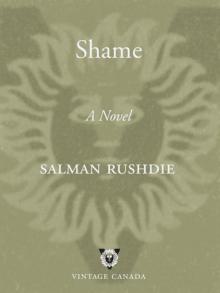 Shame
Shame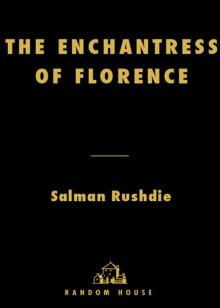 The Enchantress of Florence
The Enchantress of Florence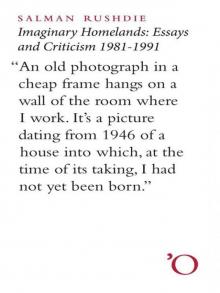 Imaginary Homelands: Essays and Criticism 1981-1991
Imaginary Homelands: Essays and Criticism 1981-1991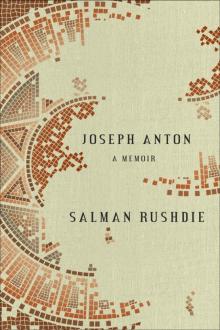 Joseph Anton: A Memoir
Joseph Anton: A Memoir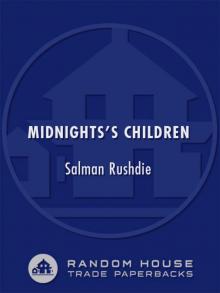 Midnight's Children
Midnight's Children East, West: Stories
East, West: Stories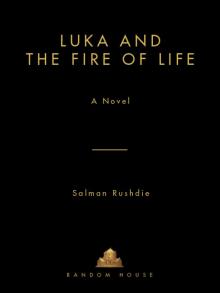 Luka and the Fire of Life
Luka and the Fire of Life Fury Fury Fury
Fury Fury Fury Haroun and the Sea of Stories
Haroun and the Sea of Stories Step Across This Line: Collected Nonfiction 1992-2002
Step Across This Line: Collected Nonfiction 1992-2002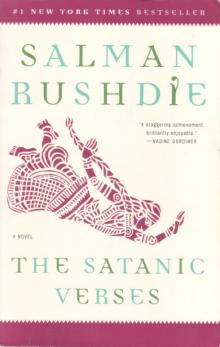 The Satanic Verses
The Satanic Verses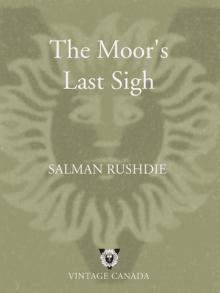 The Moor's Last Sigh
The Moor's Last Sigh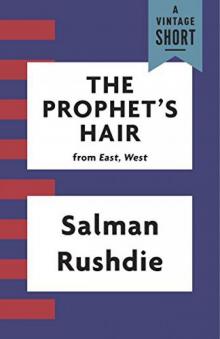 The Prophet's Hair
The Prophet's Hair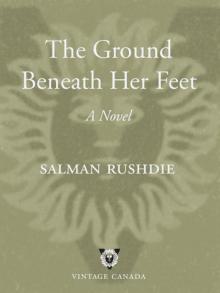 The Ground Beneath Her Feet
The Ground Beneath Her Feet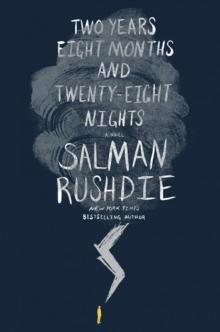 Two Years Eight Months and Twenty-Eight Nights
Two Years Eight Months and Twenty-Eight Nights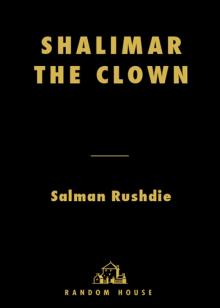 Shalimar the Clown
Shalimar the Clown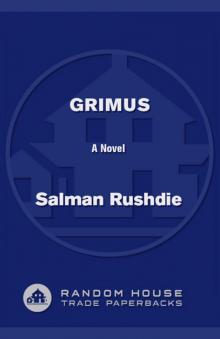 Grimus
Grimus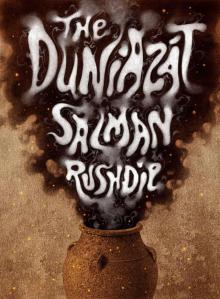 The Duniazát
The Duniazát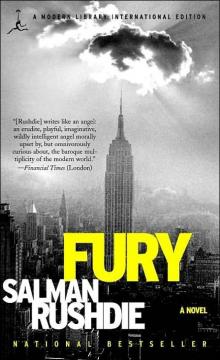 Fury
Fury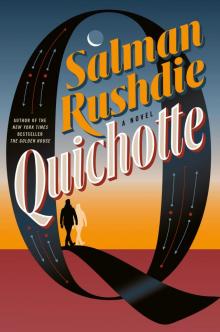 Quichotte
Quichotte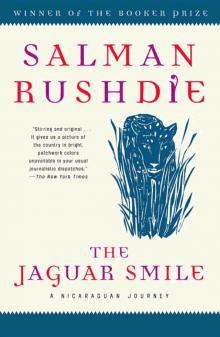 The Jaguar Smile
The Jaguar Smile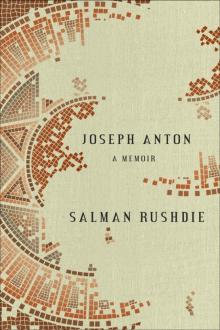 Joseph Anton
Joseph Anton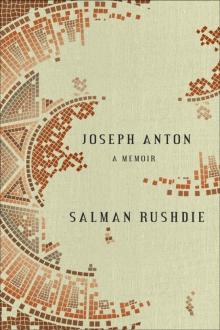 Joseph Anton: A Memoir: A Memoir
Joseph Anton: A Memoir: A Memoir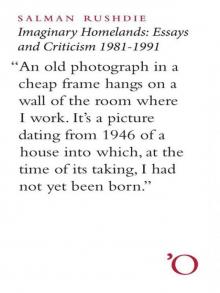 Imaginary Homelands
Imaginary Homelands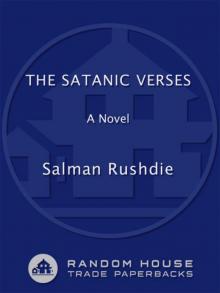 The Satanic Verses: A Novel
The Satanic Verses: A Novel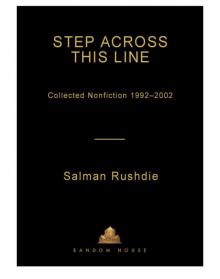 Step Across This Line
Step Across This Line East, West
East, West